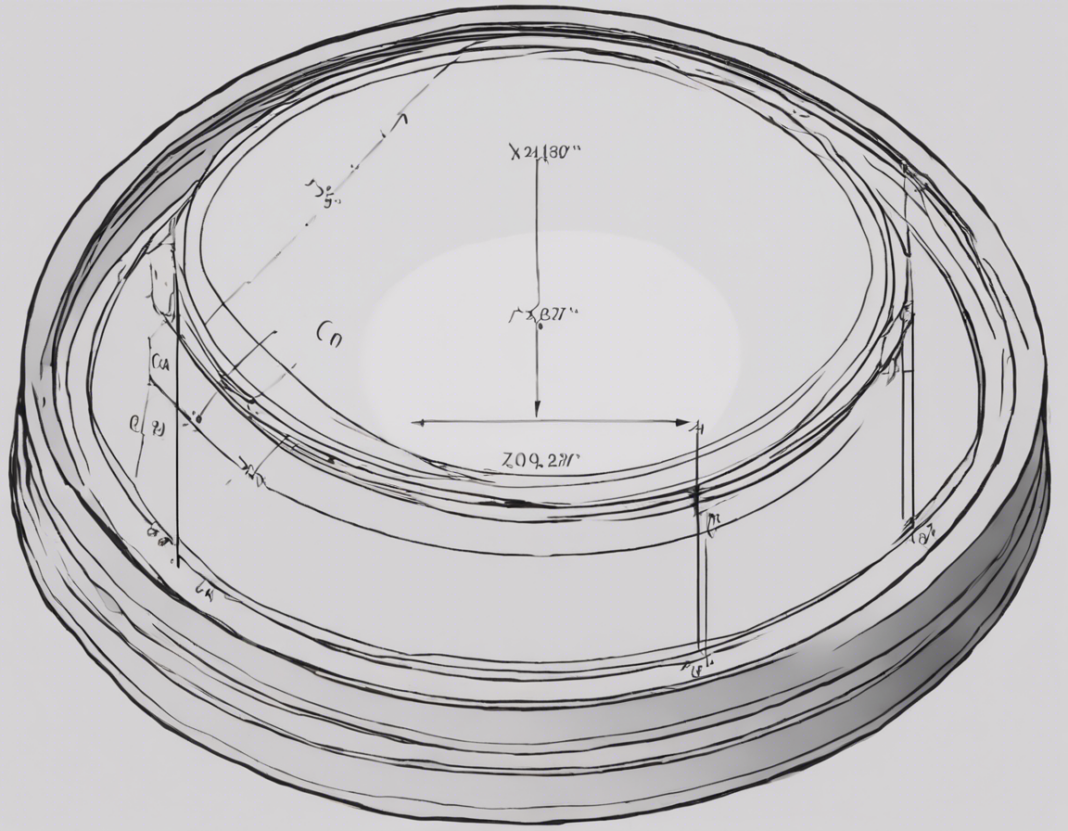Whether you are studying physics or simply curious about optics, understanding how to calculate the focal length of a convex mirror is a fundamental concept. Convex mirrors are curved reflective surfaces that bulge outwards, and are often used in various applications such as security mirrors, side-view mirrors in vehicles, and cosmetic mirrors.
In this article, we will delve into the basics of convex mirrors, explore the sign convention for mirrors, and provide a step-by-step guide on how to calculate the focal length of a convex mirror. Let’s dive into the world of optics and unravel the mysteries of convex mirrors.
Understanding Convex Mirrors
Convex mirrors, also known as diverging mirrors, have reflective surfaces that bulge outwards. They are curved mirrors where the reflective surface faces outwards. When light rays strike a convex mirror, they diverge or spread out. This divergence is what allows convex mirrors to create a wider field of view compared to flat or concave mirrors.
Convex mirrors have several applications, such as:
- Security Mirrors: Used in stores, parking lots, and warehouses to provide a wide field of view and eliminate blind spots.
- Vehicle Side-View Mirrors: Help drivers see a wider area behind and to the side of their vehicle.
- Cosmetic Mirrors: Commonly found in makeup mirrors, allowing users to see a magnified image of themselves.
Sign Convention for Mirrors
Before diving into calculating the focal length of a convex mirror, it’s important to understand the sign convention used in optics. In the context of mirrors:
- Distances:
- Distances along the principal axis are usually measured from the mirror towards the left as positive and towards the right as negative.
- Focal Length (f):
- For convex mirrors, the focal length is considered negative due to the reflective properties of the mirror. This is a key point to remember when working with convex mirrors.
- Object Distance (do) and Image Distance (di):
- The object distance (do) is the distance of the object from the mirror, and the image distance (di) is the distance of the image from the mirror. These distances are also signed according to the direction from which light approaches or appears to approach the mirror.
Calculating the Focal Length of a Convex Mirror
Now, let’s get to the crux of the matter – calculating the focal length of a convex mirror. The focal length of a mirror is half of the radius of curvature of the mirror. Here’s a step-by-step guide to help you determine the focal length of a convex mirror:
- Understand the Mirror’s Geometry:
-
The radius of curvature (R) of a convex mirror is the distance between the mirror’s surface and its center of curvature.
-
Measure the Radius of Curvature:
-
Use appropriate tools to measure the radius of curvature of the convex mirror. Ensure that the measurement is accurate for precise calculations.
-
Calculate the Focal Length:
-
Once you have the radius of curvature (R), you can calculate the focal length (f) using the formula:
[ f = \frac{R}{2} ] -
Determine the Sign:
-
Remember that for convex mirrors, the focal length is considered negative. This is vital for using the correct sign in calculations and equations.
-
Verify Your Calculation:
- Double-check your calculations and measurements to ensure accuracy in determining the focal length of the convex mirror.
By following these steps, you can successfully calculate the focal length of a convex mirror and gain valuable insights into the mirror’s optical properties.
FAQs (Frequently Asked Questions)
Here are some common questions related to calculating the focal length of a convex mirror:
- Can a convex mirror have a positive focal length?
-
No, for convex mirrors, the focal length is always considered negative due to their diverging nature.
-
What is the significance of the focal length of a convex mirror?
-
The focal length determines the point at which parallel light rays converge or appear to converge after reflection from the mirror.
-
How does the radius of curvature relate to the focal length of a convex mirror?
-
The focal length of a convex mirror is half of the radius of curvature. This relationship is crucial for optical calculations.
-
Are there any practical tips for measuring the radius of curvature of a convex mirror?
-
Use a measuring tape or ruler to measure the distance from the mirror’s surface to its center. Take multiple measurements for accuracy.
-
Can convex mirrors produce real images?
-
No, convex mirrors always produce virtual images that appear behind the mirror. The images formed are upright and reduced in size.
-
Why is it important to understand the sign convention for mirrors in optics?
-
The sign convention helps determine the direction of light rays and the nature of images formed by mirrors. It is essential for accurate optical calculations.
-
What factors can affect the focal length of a convex mirror?
-
Factors such as the curvature of the mirror, its shape, and any distortions in the reflective surface can influence the focal length of a convex mirror.
-
Can convex mirrors be used for magnification purposes?
-
Yes, convex mirrors are often used for magnification in applications such as makeup mirrors and security mirrors to provide a wider field of view.
-
How does the focal length of a convex mirror compare to that of a concave mirror?
-
The focal length of a convex mirror is always negative, while the focal length of a concave mirror can be positive or negative depending on its orientation.
-
What practical experiments can be conducted to understand the focal length of convex mirrors?
- Experimenting with different objects at varying distances from the convex mirror can help visualize how images are formed and understand the mirror’s focal properties.
By exploring these FAQs, you can deepen your understanding of convex mirrors, focal length calculations, and the underlying principles of optics. Optics is a fascinating field that plays a crucial role in various scientific and everyday applications. Understanding the nuances of convex mirrors and their focal lengths can enhance your knowledge of light and reflection phenomena.












